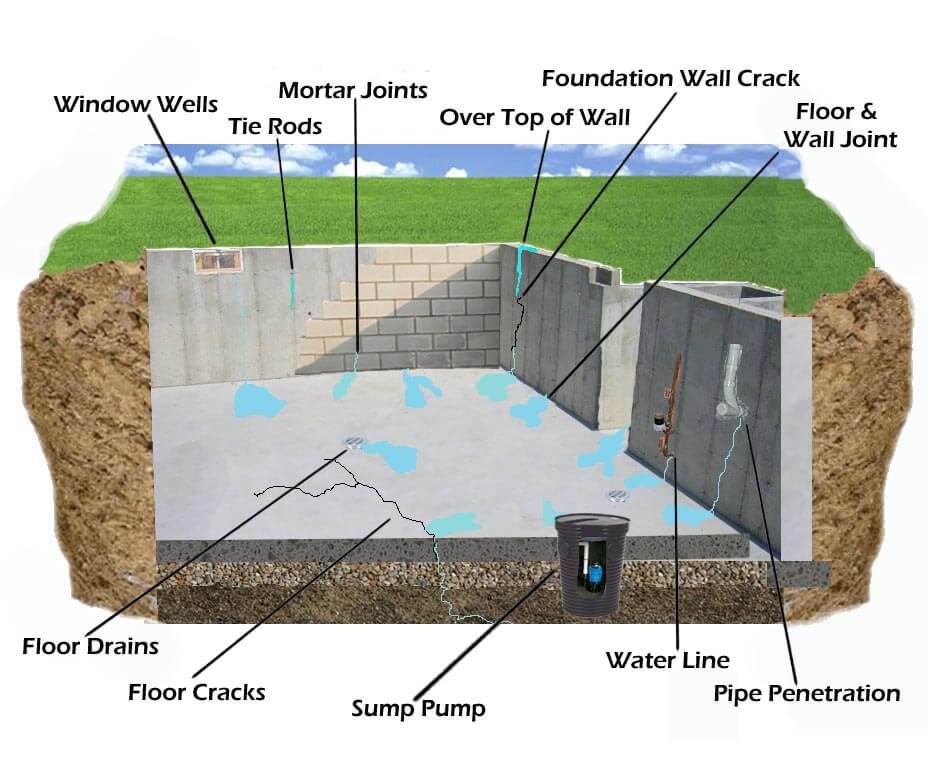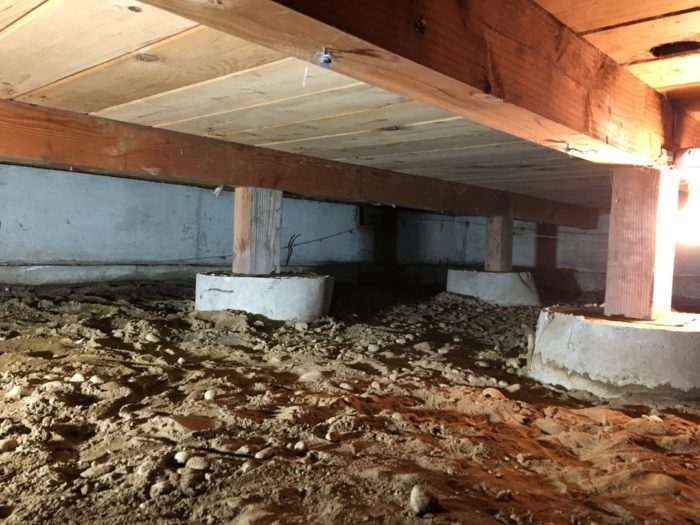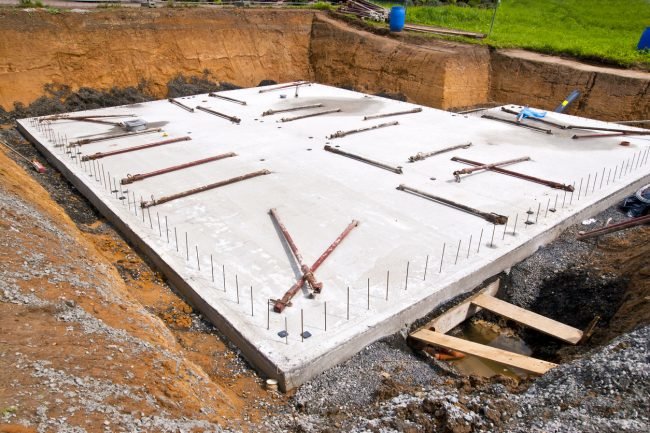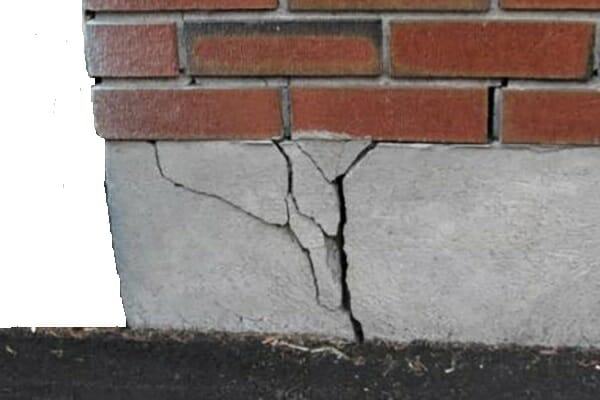There are four basic home foundations: partial or full basement, crawlspace, slab-on-grade, and surface mount. The choice of foundation depends on the natural state of your land, type of soil, frost lines, water tables, drainage, elevations, and local building codes.
Foundation Types

Basement foundation
A basement foundation is one of the most common types of foundations because it adds square feet to the living area of your home and can either be finished or unfinished. The basement is usually the same size as your home’s footprint, but it’s possible to have a slab portion under a garage or workshop.
The basement floor is normally a slab, and the walls are poured concrete. Some foundation walls are made of wood, while many older walls could also be block or stone.

Crawlspace foundation
A crawlspace foundation is not placed directly on the ground but normally two to four feet above the ground and supported by walls extending from the footings. This type of foundation is great for areas with high moisture content where water can build up and offers easy access to plumbing and other utilities.
The floor of a crawlspace can either be a concrete pad or crushed rock and as the name implies, standing up is not possible in the crawlspace area.

Slab-on-grade foundation
Slab foundations are the most commonly used foundations in new homes. They are built from a concrete pad that is normally four to six inches thick in the middle and up to 24 inches thick on the edges. These are very common in areas with a high water table or poor soil quality where you likely wouldn’t want a basement.
These foundations use less concrete than a full basement and provide a great base to passively heat a home with radiant heating, which is more cost-efficient and environmentally friendly.
Common Issues
Although there are different types of foundations, they all deteriorate from similar causes.
The soil
Below the foundation, the soil’s volume can contract or expand. If too much weight is put over the soil, it may compress more than expected, and the home may sink in some areas. In other cases, soil known as expansive soil contains minerals that absorb water and can swell.
Poor drainage
If your property is not graded to allow water to flow away from your house, water may pool around your foundation. The soil may expand and cause the foundation to weaken and the concrete to deteriorate. Water damage can also happen if the foundation is improperly waterproofed. Concrete is porous, so water can seep through concrete and affect any adjacent wood structures and basement interiors if there is no waterproofing.
Tree roots
Depending on where trees are placed on your property, roots may cause significant foundation damage by putting pressure on it or taking water out of the soil. This effect can be seen on sidewalks close to trees.
Material and size
Some homes from the early 1900s have concrete foundations made with a large proportion of dirty or salty sand or a high water-to-cement ratio, which makes for weak foundations. Other homes have foundations that are too small or do not meet the modern building code. Houses like these may warrant a whole new foundation or at least an upgrade, especially if the foundation appears weak.
Overloading
When levels or rooms are added to a house, the load on a foundation increases beyond its original capacity. Even adding new openings for a stairwell or a skylight requires reinforcement, which may stress a foundation and lead to more issues.
Radon gas
No matter their construction or foundation type, all homes are at risk of dangerous levels of radon gas seeping in. Radon gas can come in through cracks in the foundation, exhaust pipes and even well water. The only way to know whether or not your home contains high levels of radon is to test for it.
Termites
Similarly, termites can find a way into your house through cracks in your foundation or plumbing or other utility entrances.
Care
Here are five tips to keep your foundation in good shape:
Keep shrubbery trimmed
If you have shrubs or trees close to the foundation, keep them small and shorter than three feet. Plant new shrubbery and hedges about three feet away from the foundation.
Fill foundation cracks
Call a foundation repair company to fix any cracks in your foundation and keep track of noticeable cracks to make sure they don’t worsen over time.
Keep moisture levels consistent
It’s important to keep your foundation from getting too wet or too dry. If the warm months in your area are very dry, install hoses or soakers to wet the foundation. If you have wet months or have a wet season, grade the soil so water will flow away from the foundation.
Make sure your downspouts are working properly and prevent water from pooling after heavy rains.
Test underground water sources for leaks
Call a plumber to check underground water systems every year or two to prevent leaks that can cause a wet foundation.
Inspect your foundation regularly
You should examine your foundation at least twice a year. Walk around the foundation and look for large cracks, buckling walls, sagging roofs, and doors and window frames that look like they no longer fit. If you notice any warning signs of a damaged foundation, call an expert to investigate further.
Warning signs of a damaged or bad foundation
- Foundation cracks, wall/floor cracks
- Foundation is sinking
- Doors that stick or don’t open and close properly
- Gaps around window frames or doors
- Sagging or uneven floors

The House
Explore the different components of the house.

